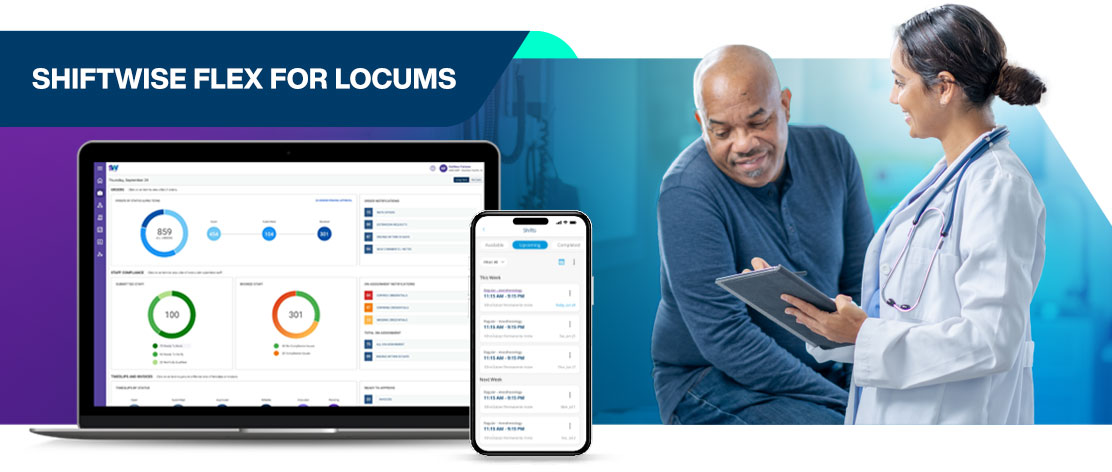
AI in Healthcare Talent Management: How Health Systems Can Integrate AI into Their Workforce Management Strategy
The healthcare industry is grappling with unprecedented challenges, including a surge in service demand, staff shortages, burnout, and high turnover rates.
Health systems must swiftly adopt innovative and agile workforce management strategies to address these pressing issues. One strategy is integrating artificial intelligence (AI) to optimize talent acquisition and retention.
AI can help health systems improve workforce management in various ways, such as automating repetitive and administrative tasks, enhancing data-driven decision-making, personalizing learning and development, and fostering diversity and inclusion. In this report, we will explore four examples of how health systems can integrate AI into their workforce management strategy, focusing on the following areas:
- Attracting qualified and diverse talent
- Improving the quality and efficiency of the hiring process
- Retaining and engaging talent
- Developing and upskilling talent
Attracting Qualified and Diverse Talent
One of the critical challenges for health systems is to attract qualified and diverse talent that can meet the current and future needs of the industry. AI can help health systems enhance their employer branding, reach out to passive candidates, and reduce bias in the sourcing process. Here are some examples of how AI can help health systems attract qualified and diverse talent:
- AI-powered chatbots are a technological marvel and a powerful tool for health systems to engage with potential candidates. These chatbots can be deployed across various platforms, including websites, social media, and messaging apps. They provide candidates with comprehensive information about the organization, job opportunities, and the application process. Moreover, they can gather candidate feedback, giving health systems valuable insights into candidate engagement and satisfaction levels.
- AI-powered talent analytics can help health systems identify and target passive candidates with the skills and qualifications that match their needs. Talent analytics can also help health systems understand the preferences and motivations of different segments of candidates, such as millennials, women, and minorities, and tailor their recruitment strategies accordingly.
- AI-powered sourcing tools can help health systems reduce bias and increase diversity in their talent pool by screening candidates based on objective criteria, such as skills, experience, and education, rather than subjective factors, such as name, gender, or ethnicity. AI-powered sourcing tools can also help health systems eliminate duplicate and outdated profiles and ensure a fresh and accurate database of candidates.

Improving the Quality and Efficiency of the Hiring Process
Another challenge for health systems is to improve the quality and efficiency of the hiring process, which can be time-consuming, costly, and prone to human error. AI can help health systems automate and streamline the hiring process, such as screening resumes, scheduling interviews, and assessing candidates. Here are some examples of how AI can help health systems improve the quality and efficiency of the hiring process:
- AI-powered resume screening tools can help health systems filter out unqualified candidates and rank the qualified ones based on their fit for the role and the organization. AI-powered resume screening tools can also help health systems reduce bias and increase diversity in the hiring process by using natural language processing and machine learning to analyze resumes and cover letters without relying on keywords or phrases that may indicate a candidate's demographic characteristics.
- AI-powered interview scheduling tools can help health systems save time and resources by automating the coordination and communication of interview dates, times, and locations with candidates and hiring managers. AI-powered interview scheduling tools can also help health systems improve the candidate experience by providing them with reminders, confirmations, and feedback.
- AI-powered assessment tools can help health systems evaluate candidates' skills, personality, and potential more objectively and reliably than traditional methods, such as tests, interviews, and references. AI-powered assessment tools can also help health systems measure candidates' fit for the role and the organization by using gamified simulations, video interviews, and behavioral analysis.
Retaining and Engaging Talent
A third challenge for health systems is to retain and engage talent, especially in the face of high turnover, burnout, and dissatisfaction among healthcare workers. AI can help health systems enhance employee engagement, recognition, and retention strategies by providing feedback, rewards, and career opportunities. Here are some examples of how AI can help health systems retain and engage talent:
- AI-powered feedback tools can help health systems collect and analyze employee feedback in real time and provide them with actionable insights and recommendations to improve their work environment, culture, and performance. AI-powered feedback tools can also help health systems identify and address employee engagement and retention issues, such as workload, stress, conflict, and dissatisfaction.
- AI-powered recognition and reward tools can help health systems motivate and appreciate employees by providing personalized and timely recognition and rewards, such as badges, points, certificates, and bonuses. AI-powered recognition and reward tools can also help health systems foster a culture of recognition and reward by enabling peer-to-peer and manager-to-employee recognition and reward.
- AI-powered career development tools can help health systems support and empower employees by providing personalized and relevant career opportunities, such as training, mentoring, coaching, and internal mobility. AI-powered career development tools can help health systems retain and engage employees by aligning their career goals and aspirations with the organization's vision and mission.
Developing and Upskilling Talent
A fourth challenge for health systems is to develop and upskill talent, especially in the context of rapid technological and organizational changes that require new and updated skills and competencies. AI can help health systems enhance learning and development strategies, such as delivering personalized and adaptive learning, assessing learning outcomes, and identifying skill gaps. Here are some examples of how AI can help health systems develop and upskill talent:
- AI-powered learning platforms can help health systems deliver personalized and adaptive learning experiences to their employees by using data and algorithms to customize the learning materials' content, format, pace, and difficulty according to the employees' preferences, needs, and goals. AI-powered learning platforms can also help health systems deliver adaptive learning experiences by adjusting the learning materials based on employee performance and feedback.
- AI-powered assessment tools can help health systems assess the learning outcomes and impact of their learning and development programs by using data and analytics to measure the employees' knowledge, skills, and behavior before, during, and after the learning interventions. AI-powered assessment tools can also help health systems assess the learning outcomes and impact of their learning and development programs by using natural language processing and machine learning to analyze the employees' feedback and sentiment.
- AI-powered skill gap analysis tools can help health systems identify the skill gaps and needs of their employees and the organization by using data and analytics to compare the current and desired skills and competencies of the employees and the organization. AI-powered skill gap analysis tools can also help health systems identify the skill gaps and needs of their employees and the organization by using natural language processing and machine learning to analyze the job descriptions, performance reviews, and feedback of the employees and the organization.



